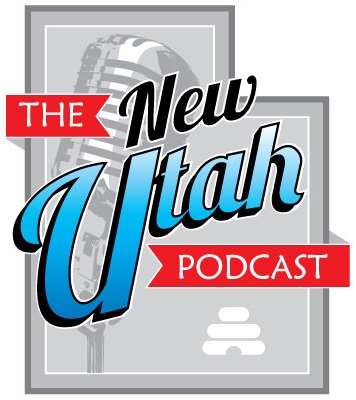This is TNUP’s last episode of 2021. We’re so excited for 2022. For 2022 instead of just researching the amazing places in Utah, we’ll be visiting some of them. We’ll record a bit, take some pictures, and then come back to the show to tell you about our adventure.
We open the show this week by talking about football bowl cancellations due to COVID concerns. As of our recording, the Hawai’i Bowl, Military Bowl, Holiday Bowl, Fenway Bowl, and the Arizona Bowl. As of this writing, the Rose Bowl will be played. Go Utes! Along with that a small shout-out to Tom Barberi, who passed away on Christmas Eve. He was a staple in the Utah media and will be missed.
Bre and Chris talk about their successful delivery of Sub for Santa gifts and a successful mouse trapping. So far there are no signs of a second mouse. Fingers crossed we don’t end up with a mouse infestation similar to Jeremy’s rats!

This week we talk about the Kennecott Utah Copper Mine or the Bingham Canyon Mine, the largest man-made excavation and deepest open pit mine in the world. Currently the mine is owned by Rio Tinto Group (a British-Australian multinational corporation). In the episode, we talk about the ore discovery in 1848 by Sanford and Thomas Bingham (whom the canyon and mine were originally named after) and the many iterations of owners the mine has had since its opening in 1863. While the mine brought much work and prosperity to Utah, it’s become a blight to the west bench that managed to literally bury entire cities.

The mine does not just produce approximately 300,000 short tons of copper annually but also, 400,000 troy ounces of gold, 4,000,000 troy ounces of silver and about 10,000 short tons of molybdenum. While I think everyone has heard of copper, silver, and gold, none of us had heard of molybdenum, a metal that is ductile and highly resistant to corrosion. It also has one of the highest melting points of all pure elements. We also found out the molybdenum is a micronutrient that is essential for life but can be poisonous when you are overexposed. (Don’t say we never taught you anything)
We also talk about the huge equipment needed to undertake this type of mining. One shovelful from a bucket holds more than 100 tons of material and it takes about three scoops to fill the 320-ton haul trucks used in the mine. The electrical shovels are six-stories high, and the average haul truck is 24 feet high with six tires more than 12 ½ feet tall. Each of the tires lasts about nine months and when the truck is fully loaded, it weighs more than 1,100,000 pounds.


In addition to burying entire towns, we talk about Daybreak being built on top of old tailing ponds. In 1990, homes that that been built on former flood plains were discovered to be contaminated with high levels of lead and arsenic. In its history, smelters caused sulfur dioxide gas emissions that significantly damaged neighboring crops and have had at least 25 chemical spills since 1989.
When Rio Tinto purchased the mine in 1989, they modernized the mine, mill, and the smelter. They also replace the railroad with conveyor belts and pipelines for transporting both ore and waste. We discuss the landslides and that the pit can be seen with the naked eye from outer space!!!

The Bigham Canyon Open Pit Copper Mine is on the list of National Historic Landmarks. We talked about the visitors’ center being open on the episode, but it is still closed due to COVID restrictions. You can take a virtual tour on their website.
Chris puts us all on the spot about our favorite episode of year but I’m the only one caught unaware and unprepared, as is the yoozh. He also tells us about his company’s impromptu Christmas party where is boss is like Oprah, “You get a prize! And you get a prize! And you get a prize!!!”
We hope you have a great new year, and we’ll see ya on the flip side!
We will ALWAYS love your “likes” BUT don’t forget to click that little SHARE button (or retweet) *sharing IS indeed caring* You can find us and subscribe on Soundcloud, Spotify, Stitcher, or Itunes, IHeartRadio, Google Play, and TuneIN. Leave us a review and Follow us on the Twitter @tnupodcast, Instagram @Tnupodcast, or on Facebook The New Utah Podcast
























